Author Archives: Rita Kozlov
Author Archives: Rita Kozlov
We have some big news to share today: Replicate, the leading platform for running AI models, is joining Cloudflare.
We first started talking to Replicate because we shared a lot in common beyond just a passion for bright color palettes. Our mission for Cloudflare’s Workers developer platform has been to make building and deploying full-stack applications as easy as possible. Meanwhile, Replicate has been on a similar mission to make deploying AI models as easy as writing a single line of code. And we realized we could build something even better together by integrating the Replicate platform into Cloudflare directly.
We are excited to share this news and even more excited for what it will mean for customers. Bringing Replicate’s tools into Cloudflare will continue to make our Developer Platform the best place on the Internet to build and deploy any AI or agentic workflow.
Before we spend more time talking about the future of AI, we want to answer the questions that are top of mind for Replicate and Cloudflare users. In short:
For existing Replicate users: Your APIs and workflows will continue to work without interruption. You will soon benefit from the Continue reading
Open source is the core fabric of the web, and the open source tools that power the modern web depend on the stability and support of the community.
To ensure two major open source projects have the resources they need, we are proud to announce our financial sponsorship to two cornerstone frameworks in the modern web ecosystem: Astro and TanStack.
Critically, we think it’s important we don’t do this alone — for the open web to continue to thrive, we must bet on and support technologies and frameworks that are open and accessible to all, and not beholden to any one company.
Which is why we are also excited to announce that for these sponsorships we are joining forces with our peers at Netlify to sponsor TanStack and Webflow to sponsor Astro.
Our decision to support Astro and TanStack was deliberate. These two projects represent distinct but complementary visions for the future of web development. One is redefining the architecture for high-performance, content-driven websites, while the other provides a full-stack toolkit for building the most ambitious web applications.
When it Continue reading
It’s not a secret that at Cloudflare we are bullish on the future of agents. We’re excited about a future where AI can not only co-pilot alongside us, but where we can actually start to delegate entire tasks to AI.
While it hasn’t been too long since we first announced our Agents SDK to make it easier for developers to build agents, building towards an agentic future requires continuous delivery towards this goal. Today, we’re making several announcements to help accelerate agentic development, including:
New Agents SDK capabilities: Build remote MCP clients, with transport and authentication built-in, to allow AI agents to connect to external services.
BYO Auth provider for MCP: Integrations with Stytch, Auth0, and WorkOS to add authentication and authorization to your remote MCP server.
Hibernation for McpAgent: Automatically sleep stateful, remote MCP servers when inactive and wake them when needed. This allows you to maintain connections for long-running sessions while ensuring you’re not paying for idle time.
Durable Objects free tier: We view Durable Objects as a key component for building agents, and if you’re using our Agents SDK, you need access to it. Until today, Durable Objects Continue reading
We’re kicking off Cloudflare’s 2025 Developer Week — our innovation week dedicated to announcements for developers.
It’s an exciting time to be a developer. In fact, as a developer, the past two years might have felt a bit like every week is Developer Week. Starting with the release of ChatGPT, it has felt like each day has brought a new, disruptive announcement, whether it’s new models, hardware, agents, or other tools. From late 2024 and in just the first few months of 2025, we’ve seen the DeepSeek model challenge assumptions about what it takes to train a new state-of-the-art model, MCP introduce a new standard for how LLMs interface with the world, and OpenAI’s o4 model Ghiblify the world.
And while it’s exciting to witness a technological revolution unfold in front of your eyes, it’s even more exciting to partake in it.
One of the marvels of the recent AI revolution is the extent to which the cost of experimentation has gone down. Ideas that would have taken whole weekends, weeks, or months to build can now be turned into working code in a day. You can vibe-code your way through things you might Continue reading
As engineers, we’re obsessed with efficiency and automating anything we find ourselves doing more than twice. If you’ve ever done this, you know that the happy path is always easy, but the second the inputs get complex, automation becomes really hard. This is because computers have traditionally required extremely specific instructions in order to execute.
The state of AI models available to us today has changed that. We now have access to computers that can reason, and make judgement calls in lieu of specifying every edge case under the sun.
That’s what AI agents are all about.
Today we’re excited to share a few announcements on how we’re making it even easier to build AI agents on Cloudflare, including:
agents-sdk — a new JavaScript framework for building AI agents
Updates to Workers AI: structured outputs, tool calling, and longer context windows for Workers AI, Cloudflare’s serverless inference engine
An update to the workers-ai-provider for the AI SDK
We truly believe that Cloudflare is the ideal platform for building Agents and AI applications (more on why below), and we’re constantly working to make it better — you can expect to see more announcements from us in this space in the future.


Today we are announcing new pricing for Cloudflare Workers and Pages Functions, where you are billed based on CPU time, and never for the idle time that your Worker spends waiting on network requests and other I/O. Unlike other platforms, when you build applications on Workers, you only pay for the compute resources you actually use.
Why is this exciting? To date, all large serverless compute platforms have billed based on how long your function runs — its duration or “wall time”. This is a reflection of a new paradigm built on a leaky abstraction — your code may be neatly packaged up into a “function”, but under the hood there’s a virtual machine (VM). A VM can’t be paused and resumed quickly enough to execute another piece of code while it waits on I/O. So while a typical function might take 100ms to run, it might typically spend only 10ms doing CPU work, like crunching numbers or parsing JSON, with the rest of time spent waiting on I/O.
This status quo has meant that you are billed for this idle time, while nothing is happening.
With this announcement, Cloudflare is the first and only global serverless platform to Continue reading
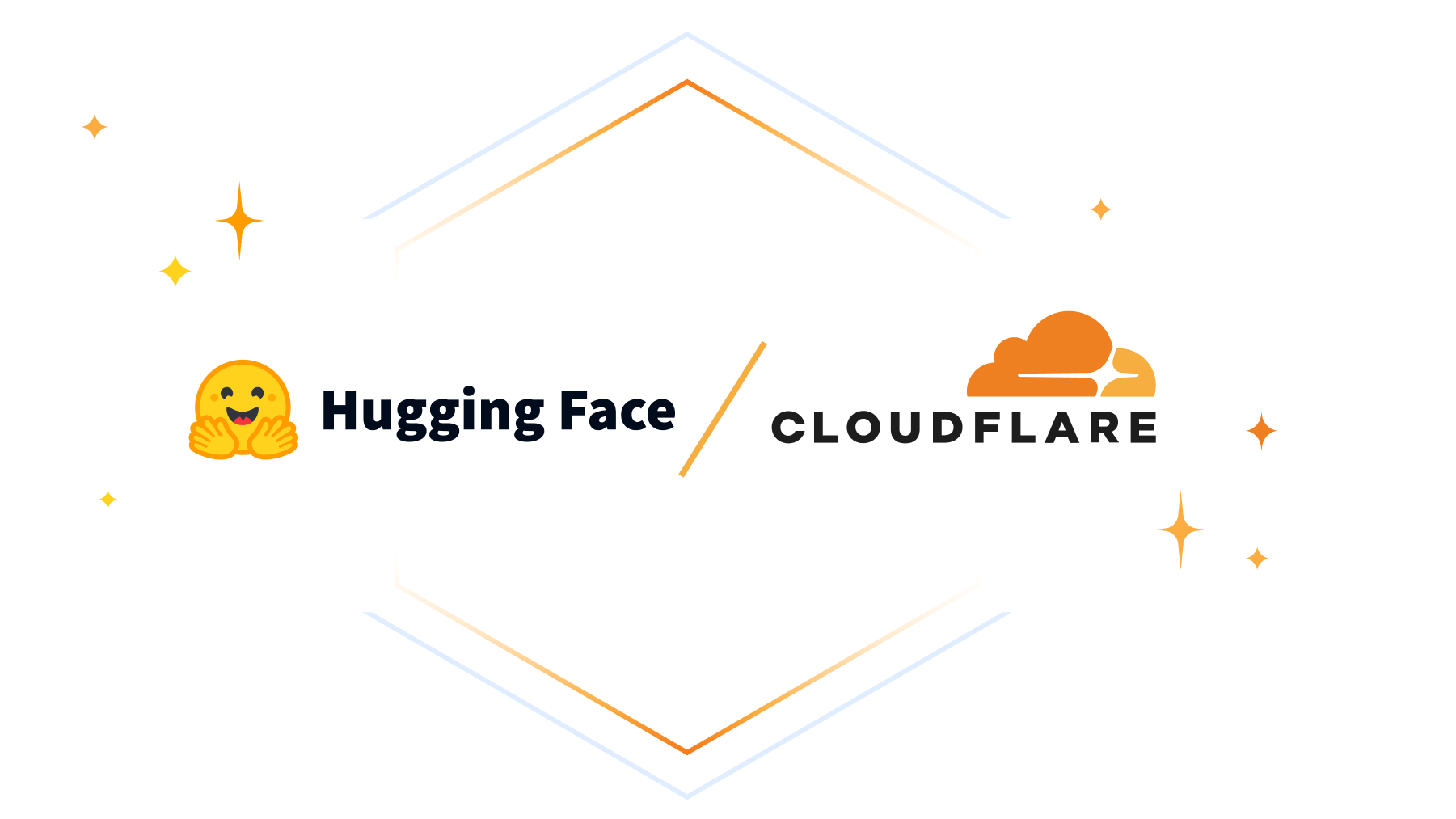
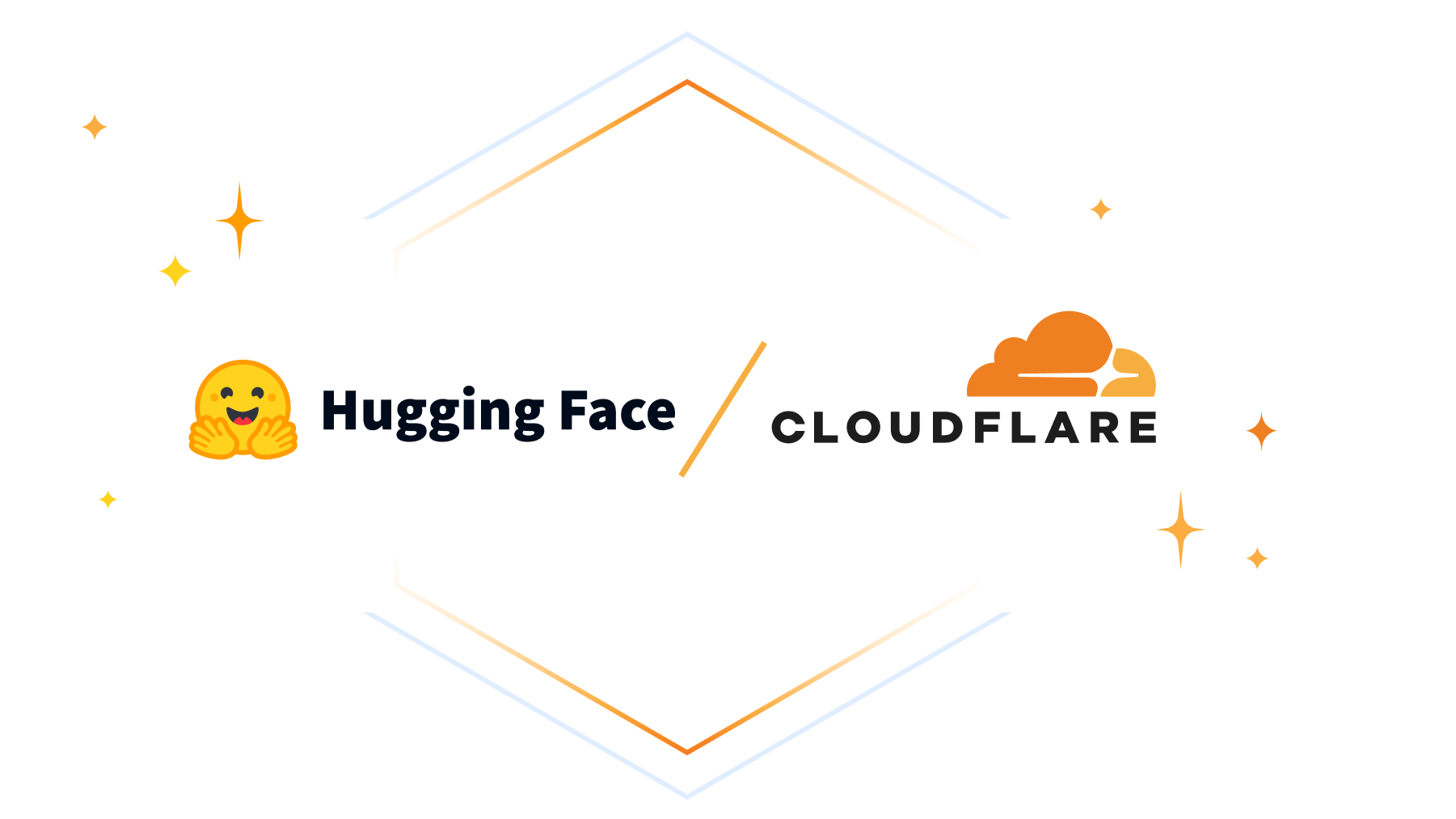
Today, we’re excited to announce that we are partnering with Hugging Face to make AI models more accessible and affordable than ever before to developers.
There are three things we look forward to making available to developers over the coming months:
Hosting over 500,000 models and serving over one million model downloads a day, Hugging Face is the go-to place for developers to add AI to their applications.
Meanwhile, over the past six years at Cloudflare, our goal has been to make it as easy as possible for developers to bring their ideas and applications to life on our developer platform.
As AI has become a critical part of every application, this partnership has felt like a natural match to put tools in the hands of developers to make deploying AI easy and affordable.
“Hugging Face and Cloudflare both share a deep focus on making the latest AI innovations as accessible and affordable Continue reading


Today, Cloudflare’s Workers platform is the place over a million developers come to build sophisticated full-stack applications that previously wouldn’t have been possible.
Of course, Workers didn’t start out that way. It started, on a day like today, as a Birthday Week announcement. It may not have had all the bells and whistles that exist today, but if you got to try Workers when it launched, it conjured this feeling: “this is different, and it’s going to change things”. All of a sudden, going from nothing to a fully scalable, global application took seconds, not hours, days, weeks or even months. It was the beginning of a different way to build applications.
If you’ve played with generative AI over the past few months, you may have had a similar feeling. Surveying a few friends and colleagues, our “aha” moments were all a bit different, but the overarching sentiment across the industry at this moment is unanimous — this is different, and it’s going to change things.
Today, we’re excited to make a series of announcements that we believe will make a similar impact as Workers did in the future of computing. Without burying the lede any further, here they Continue reading


During Cloudflare's 2023 Developer Week, we announced Constellation, a set of APIs that allow everyone to run fast, low-latency inference tasks using pre-trained machine learning/AI models, directly on Cloudflare’s network.
We now have a few thousand accounts onboarded in the Constellation private beta and have been listening to our customer's feedback to evolve and improve the platform. Today, one month after the announcement, we are upgrading Constellation with three new features:
Bigger models
We are increasing the size limit of your models from 10 MB to 50 MB. While still somewhat conservative during the private beta, this new limit opens doors to more pre-trained and optimized models you can use with Constellation.
Tensor caching
When you run a Constellation inference task, you pass multiple tensor objects as inputs, sometimes creating big data payloads. These inputs travel through the wire protocol back and forth when you repeat the same task, even when the input changes from multiple runs are minimal, creating unnecessary network and data parsing overhead.
The client API now supports caching input tensors resulting in even better network latency and faster inference times.
XGBoost runtime
Constellation started with the ONNX runtime, but our vision is to Continue reading


We announced Cloudflare Workers in 2017, giving developers access to compute on our network. We were excited about the possibilities this unlocked, but we quickly realized — most real world applications are stateful. Since then, we’ve delivered KV, Durable Objects, and R2, giving developers access to various types of storage.
Today, we're excited to announce D1, our first SQL database.
While the wait on beta access shouldn’t be long — we’ll start letting folks in as early as June (sign up here), we’re excited to share some details of what’s to come.
D1 is built on SQLite. Not only is SQLite the most ubiquitous database in the world, used by billions of devices a day, it’s also the first ever serverless database. Surprised? SQLite was so ahead of its time, it dubbed itself “serverless” before the term gained connotation with cloud services, and originally meant literally “not involving a server”.
Since Workers itself runs between the server and the client, and was inspired by technology built for the client, SQLite seemed like the perfect fit for our first entry into databases.
So what can you build with D1? Continue reading


As a business, whether a startup or Fortune 500 company, your number one priority is to make your customers happy and successful with your product. To your customers, however, success and happiness sometimes seems to be just one feature away.
“If only you could customize X, we’ll be able to use your product” - the largest prospect in your pipeline. “If you just let us do Y, we’ll expand our usage of your product by 10x” - your most strategic existing customer.
You want your product to be everything to everybody, but engineering can only keep up so quickly, so, what gives?
Today, we’re announcing Workers for Platforms, our tool suite to help make any product programmable, and help our customers deliver value to their customers and developers instantaneously.
One way to give your customers the ability to programmatically interact with your product is by providing them with APIs. That is a big part of why APIs are so prolific today — enabling code (whether your own, or that of a 3rd party) to engage with your applications is nothing short of revolutionary.
But there’s still a problem. While APIs can give developers the ability Continue reading


450,000 developers have used Cloudflare Workers since we launched.
When we announced Cloudflare Workers nearly five years ago, we had no idea if we’d ever be in this position. But a lot of care, hard work — not to mention dogfooding — later, we’ve been absolutely blown away by the use cases and applications built on our developer platform, not to mention the community that’s grown around the product.
My job isn’t just speaking to developers who are already using Cloudflare Workers, however. I spend a lot of time talking to developers who aren’t yet using Workers, too. Despite how cool the tech is — the performance, the ability to just code without worrying about anything else like containers, and the total cost advantages — there are two things that cause developers to hesitate in engaging with us on Workers.
The first: they worry about being locked in. No matter how bullish on the technology you are, if you’re betting the future of a company on a development platform, you don’t want the possibility of being held to ransom. And second: as a developer, you want a local development environment to quickly iterate and test your changes. These concerns might Continue reading


Principled. It’s one of Cloudflare’s three core values (alongside curiosity and transparency).
It’s a word that we came back to quite a bit in thinking through a question that has been foundational in driving us for this year’s Platform Week: what makes a truly great developer platform?
Of course, when it comes to evaluating developer platforms, the temptation is to focus on the “feeds and speeds” part of the equation. Who is the fastest? Who has the coolest tech? Who lets you do stuff that previously you could not?
Undoubtedly, these are all important questions. But we realized that the fun and shiny things which are often answers to these questions can easily become distractions from the true promise of developing on the Internet — and even traps that the less principled developer platforms can use to lure you into their arms.
The promise being, of course: that you can pull together solutions from a variety of different providers, to build something greater than what you’d be able to do with any one of them alone. That you can build something based on whatever is best when you sit down to create your application. And of course, if something better Continue reading


As you read this you are using the Internet. Stop and think about that for a minute. We speak about finding something “on the Internet”; we speak about “using the Internet” to perform a task. We essentially never say something like “I'm going to look for this on a server using the Internet as an intermediary between my computer and the server”.
We speak about and think about the Internet as a single, whole entity that we use and rely on. That’s behind the vision of “The Network is the Computer”. What matters is not the component parts that go into “the Internet” but what they come together to create.
That’s also the vision behind Cloudflare’s network.
We don’t want anyone to think about “caching content on a server in a Cloudflare data center” or “writing code that runs on (something called) the edge”. We want you to simply think of it as a single, global network that provides a CDN, a WAF, DDoS protection, Zero Trust and the ability to write infinitely scalable code and have it just work.
Scaling software is hard, and almost no programmer wants to spend their time worrying what will happen if Continue reading
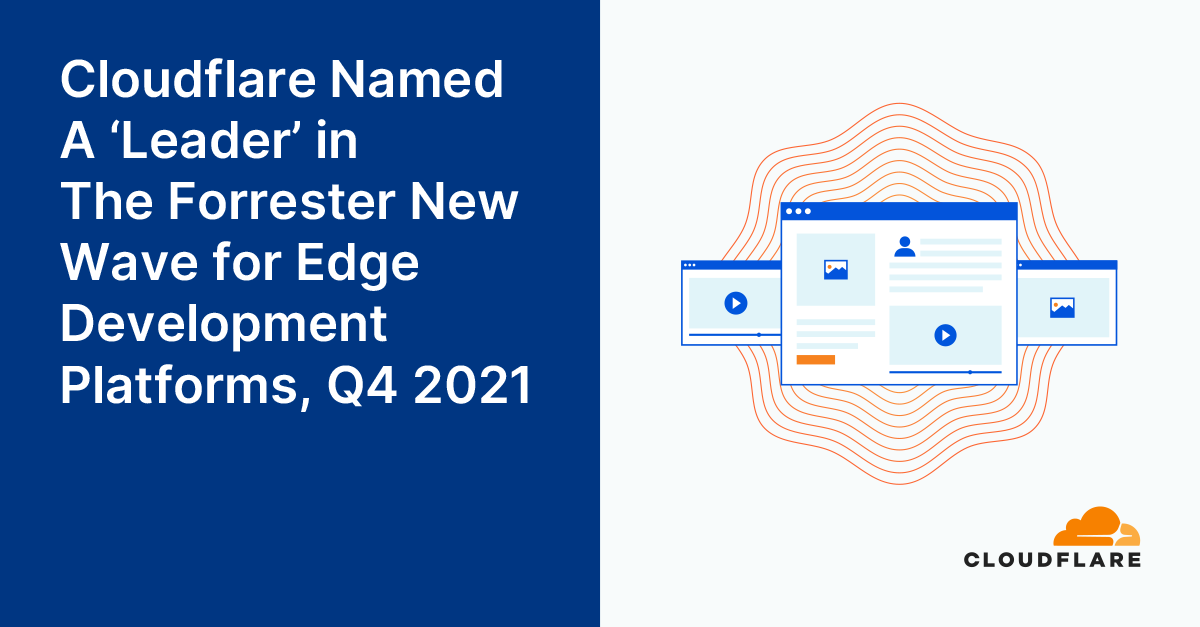
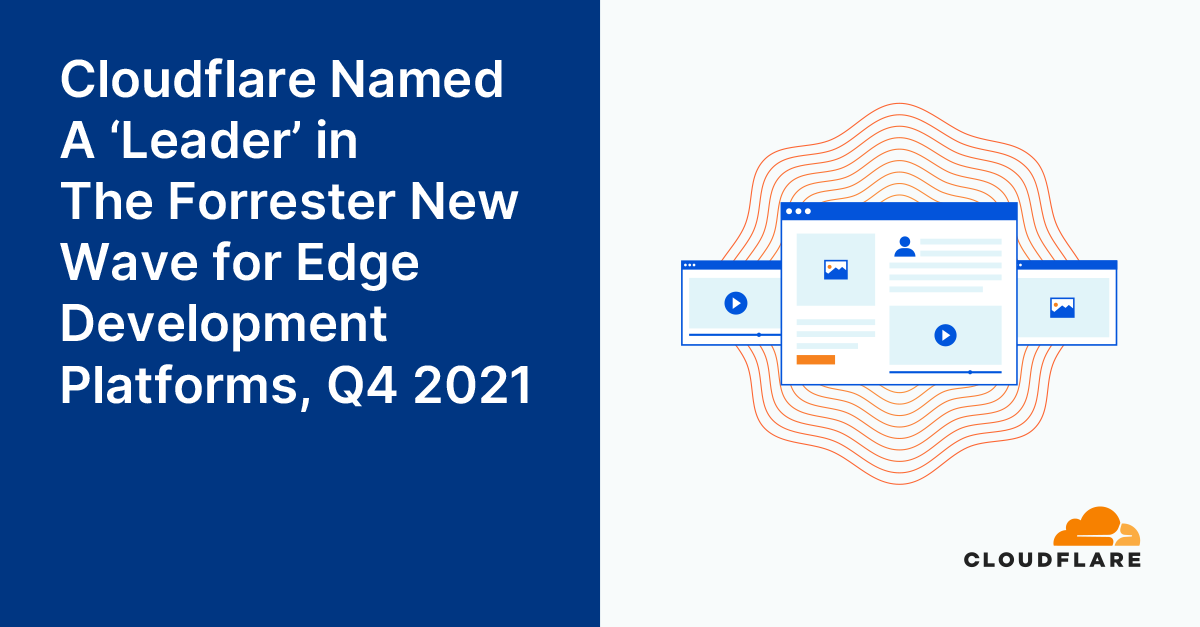
Forrester’s New Wave for Edge Development Platforms has just been announced. We’re thrilled that they have named Cloudflare a leader (you can download a complimentary copy of the report here).
Since the very beginning, Cloudflare has sought to help developers building on the web, and since the introduction of Workers in 2017, Cloudflare has enabled developers to deploy their applications to the edge itself.
According to the report by Forrester Vice President, Principal Analyst, Jeffrey Hammond, Cloudflare “offers strong compute, data services and web development capabilities. Alongside Workers, Workers KV adds edge data storage. Pages, Stream and Images provide higher level platform services for modern web workloads. Cloudflare has an intuitive developer experience, fast, global deployment of updated code, and minimal cold start times.”

Building on the web has come a long way. The idea that one might have to buy a physical machine in order to build a website seems incomprehensible now. The cloud has played a major role in making it easier for developers to get started. However, since the advent of the cloud, things have stalled — and innovation has become more incremental. That means that while developers Continue reading


In December, we announced the beta of Cloudflare Pages: a fast, secure, and free way for frontend developers to build, host, and collaborate on Jamstack sites.
It’s been incredible to see what happens when you put a powerful tool in developers’ hands. In just a few months of beta, thousands of developers have deployed over ten thousand projects, reaching millions of people around the world.
Today, we’re excited to announce that Cloudflare Pages is now available for anyone and ready for your production needs. We’re also excited to show off some of the new features we’ve been working on over the course of the beta, including: web analytics, built in redirects, protected previews, live previews, and optimized images (oh, my!). Lastly, we’ll give you a sneak peek into what we'll be working on next to make Cloudflare Pages your go-to platform for deploying not just static sites, but full-stack applications.
Cloudflare Pages radically simplifies the process of developing and deploying sites by taking care of all the tedious parts of web development. Now, developers can focus on the fun and creative parts instead.
Getting started with Cloudflare Pages is as Continue reading


Across multiple cultures around the world, this time of year is a time of celebration and sharing of gifts with the people we care the most about. In that spirit, we thought we'd take this time to give back to the developer community that has been so supportive of Cloudflare for the last 10 years.
Today, we’re excited to announce Cloudflare Pages: a fast, secure and free way to build and host your JAMstack sites.
Websites are the way we express ourselves on the web. It doesn’t matter if you’re a hobbyist with a blog, or the largest of corporations with millions of customers — if you want to reach people outside the confines of 140 280 characters, the web is the place to be.
As a frontend developer, it’s your responsibility to bring this expression to life. And make no mistake — with so many frontend frameworks, tooling, and static site generators at your disposal — it’s a great time to be in your line of work.
That is, of course, right up until the point when you’re ready to show your work off Continue reading
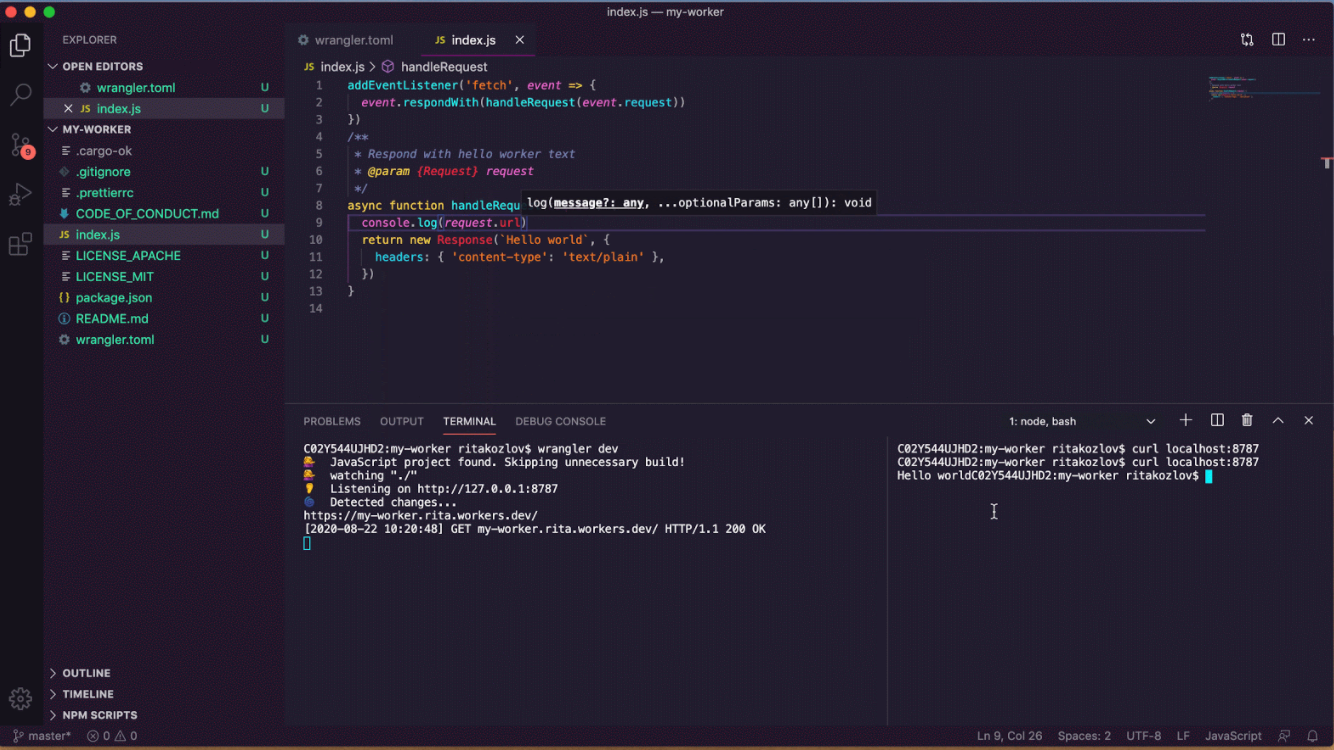
Cloudflare Workers — our serverless platform — allows developers around the world to run their applications from our network of 200 datacenters, as close as possible to their users.
A few weeks ago we announced a release candidate for wrangler dev — today, we're excited to take wrangler dev, the world’s first edge-based development environment, to GA with the release of wrangler 1.11.
It was once assumed that to successfully run an application on the web, one had to go and acquire a server, set it up (in a data center that hopefully you had access to), and then maintain it on an ongoing basis. Luckily for most of us, that assumption was challenged with the emergence of the cloud. The cloud was always assumed to be centralized — large data centers in a single region (“us-east-1”), reserved for compute. The edge? That was for caching static content.
Again, assumptions are being challenged.
Cloudflare Workers is about moving compute from a centralized location to the edge. And it makes sense: if users are distributed all over the globe, why should all of them be routed to us-east-1, on the opposite side of the world, Continue reading
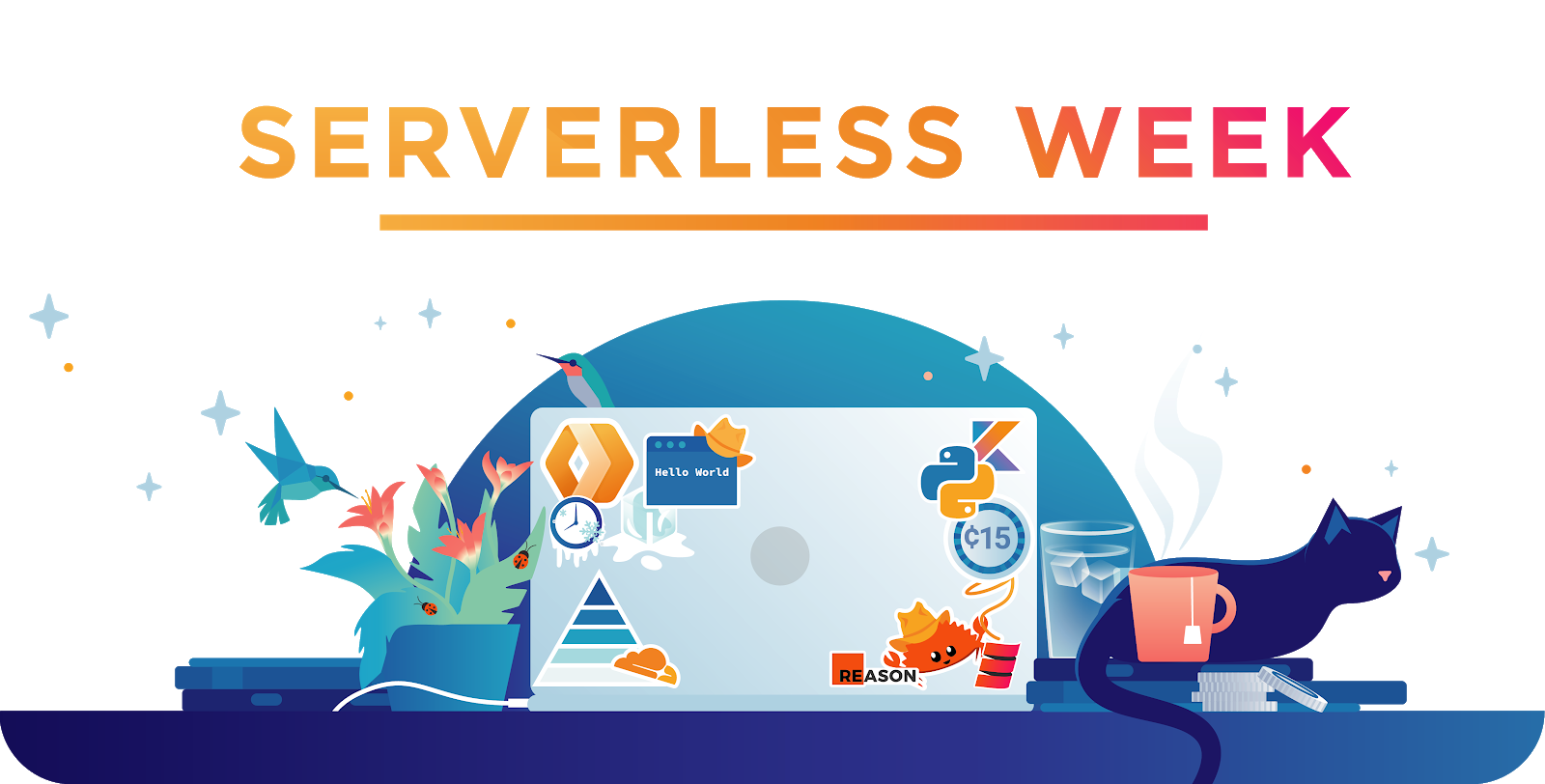
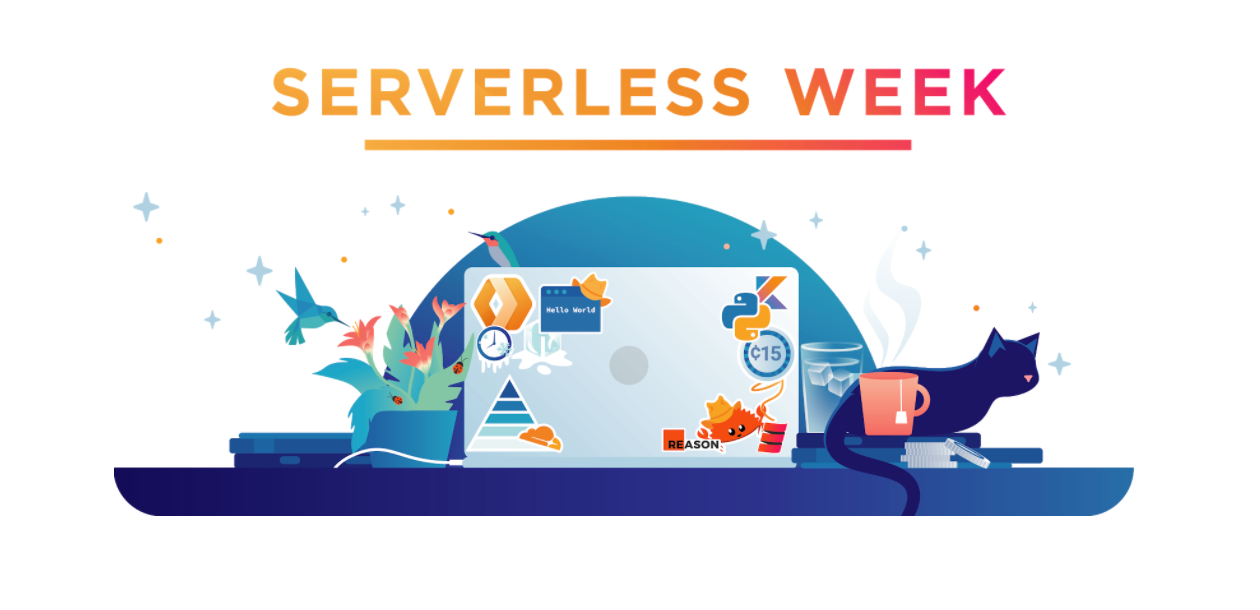
This week we’ve talked about how Workers provides a step function improvement in the TTFB (time to first byte) of applications, by running lightweight isolates in over 200 cities around the world, free of cold starts. Today I’m going to talk about another metric, one that’s arguably even more important: TTFD, or time to first dopamine, and announce a huge improvement to the Workers development experience — wrangler dev, our edge-based development environment with all the perks of a local environment.
There’s nothing quite like the rush of getting your first few lines of code to work — no matter how many times you’ve done it before, there's something so magical about the computer understanding exactly what you wanted it to do and doing it!

This is the kind of magic I expected of “serverless”, and while it’s true that most serverless offerings today get you to that feeling faster than setting up a virtual server ever would, I still can’t help but be disappointed with how lackluster developing with most serverless platforms is today.
Some of my disappointment can be attributed to the leaky nature of the abstraction: the journey to getting you to the point of writing Continue reading


The Internet has been vital to our response to the COVID-19 crisis: enabling researchers to communicate with the rest of the world, connecting resources with people who need them, and sharing data about the spread.
It’s been amazing to see some of the projects people have stood up on Cloudflare Workers to assist during this crisis. Workers allows you to get set up in minutes, it’s fast and scalable out of the box, and there’s no infrastructure to maintain or scale, which is great if you want to create a project quickly.
To support critical web projects that help in the fight against the COVID-19 pandemic, we’re giving free access to our Cloudflare Workers compute platform through Project Galileo. We believe sites, apps, APIs, and tools that can help people with COVID-19 are exactly the type of critically important projects that Project Galileo was designed to support.
One of the earliest impacts of the COVID-19 crisis was the switch that many organizations made to a fully remote model. As that happened, and we realized that many organization’s VPNs were not up to the task of scaling to support this increased load, Cloudflare made Cloudflare for Continue reading